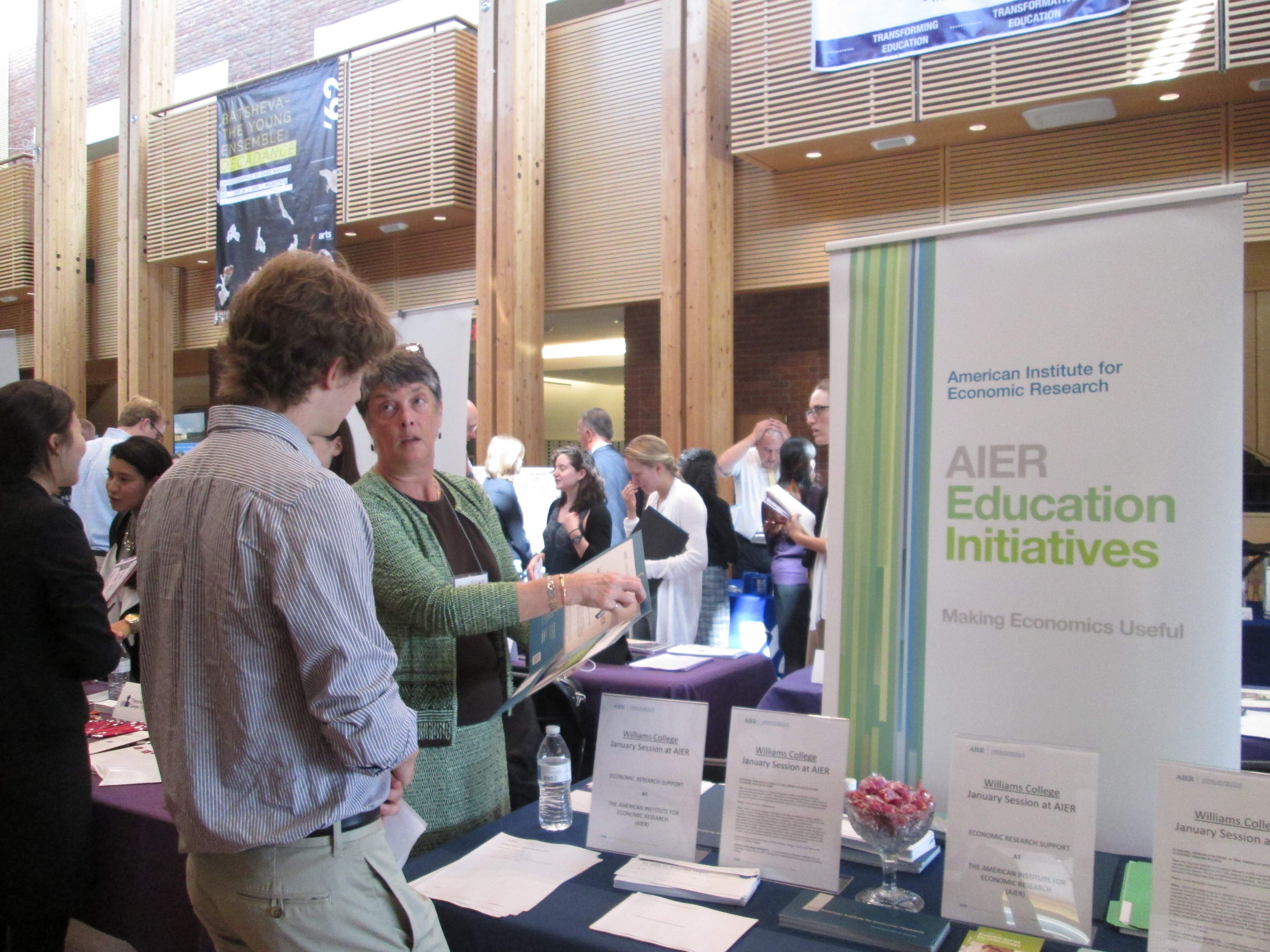Fighting an Uphill Battle for Financial Literacy
Michelle Ryan of AIER explains our financial literacy initiatives to a student at Williams College Internship Fair.
As an organization that strives to promote financial literacy to all Americans, it helps to both understand what financial literacy is, and to understand the breadth of the challenge before us.
First, what is financial literacy? The Organization for Economic Cooperation and Development (OECD) defines financial literacy as the “knowledge and understanding of financial concepts and risks, and the skills, motivation and confidence to apply such knowledge and understanding in order to make effective decisions across a range of financial contexts, to improve the financial well-being of individuals and society, and to enable participation in economic life.”[1]
It is important to emphasize that financial literacy does not refer simply to knowledge and understanding, but also the practice of applying knowledge to one’s life.
To understand the challenge of promoting financial literacy, take a look at the organization’s latest report on 15-year-old students’ financial literacy skills. This report was released in 2014, and summarizes the findings of the Programme for International Student Assessment (PISA). The assessment is an international survey that was launched in 1997, and has been conducted every three years since then. In the PISA 2012 wave, the first optional financial literacy assessment component was introduced.
The optional assessment was conducted in 18 countries and economies around the world, from Australia to the Americas to Europe, and Asia. About 29,000 students from 5,260 schools completed the financial literacy assessment.[2]
It is disheartening to find out that financial literacy among 15-years-olds is lacking overall. Just one in 10 students who participated in the assessment was able to handle the toughest financial literacy tasks, the organization reported. The highest average score was reported in Shanghai-China followed by the Flemish Community of Belgium, Estonia, Australia, New Zealand, the Czech Republic, and Poland. All of those countries and economies scored above average, according to OECD.[3]
Unfortunately, American youth scored below the world average. The mean score for this assessment was 500. United States students scored 492[4]. On average, 15 percent of those surveyed scored below the baseline level of performance in the financial literacy scale[5]. In the U.S., 18 percent of students performed below the baseline level.[6]
AIER is determined to help in the fight to turn back this trend, both for young people and adults. We continue to actively contribute to the improvement of this situation by adhering to our mission of producing “objective insights and useful information that help people successfully pursue their economic and financial goals.”
In the field of financial literacy we reach out to the local community and beyond. At the local level we carry out workshops in high schools. Our Money School curriculum helps give women survivors of domestic abuse the tools they need to manage their own finances. The materials for that program are distributed to service providers around New England. We also circulate research findings on personal finance and publish books on financial issues.
AIER will continue to educate young people about financial matters, helping them to make sound financial decisions for themselves and for the nation, and to become knowledgeable participants in the global economy.
[1] OECD (2013), PISA 2012 Assessment and Analytical Framework: Mathematics, Reading, Science, Problem Solving and Financial Literacy, OECD Publishing, p.147. http://dx.doi.org/10.1787/9789264190511-en
[2] OECD (2014), PISA 2012 Results: Students and Money: Financial Literacy Skills for the 21st Century
(Volume VI), PISA, OECD Publishing, p.13. http://dx.doi.org/10.1787/9789264208094-en
[3] Ibid.
[4] Ibid, p.15.
[5] Ibid, p.13.
[6] Lusardi (2015), Journal of Consumer Affairs, p. 646









